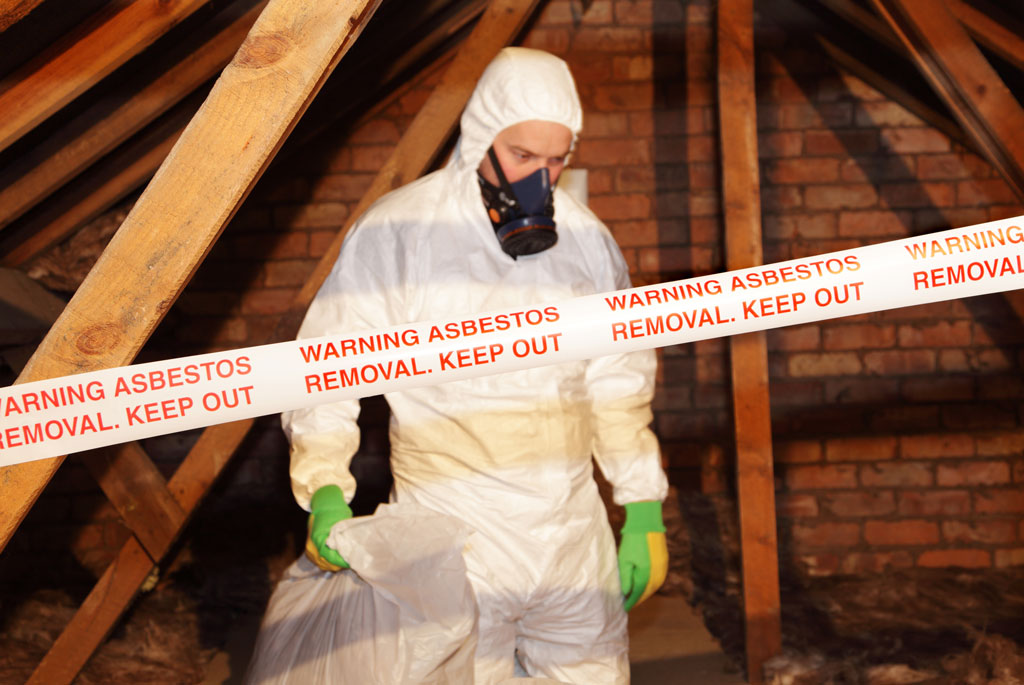Whenever some people hear of asbestos, they often dismiss it as an issue of the past. Its ill effects have been publicized popularly since the 1990s. But did you know that some homes still have asbestos roofing and plumbing? You can still find asbestos in things like brake pads and car clutches. If you live in a considerably old home, you’ll likely have this naturally occurring mineral in some areas. A plumber near me in Las Vegas, NV probably knows more about asbestos than any other people. To learn more about this dangerous mineral, continue reading.
Asbestos in Plumbing
Between the 1940s and 1980s, asbestos was an essential material in almost all forms of plumbing. Because it was fire-resistant, inexpensive, and nearly indestructible, most plumbing technicians considered it great for homes, commercial buildings, and offices. Unfortunately, this material was used for long, decades before it was realized that asbestos had a negative side. For instance, there were many cases of lung cancer stemming from asbestos yearly. Even after taking precautions, plumbing professionals are among the high-risk groups for asbestos exposure. This is why your plumber near me wears a face mask when they come for a plumbing job.
A plumber is about sixteen times more prone to developing asbestos-related diseases than others; removing the asbestos is among those jobs you shouldn’t DIY. If exposed to asbestos, you are at risk of contracting mesothelioma, lung cancer, asbestosis, laryngeal cancer, and ovarian cancer. Unfortunately, there aren’t safe exposure levels to asbestos. Whenever there’s an asbestos disturbance, there is an increased likelihood that you’ll inhale it.
Unfortunately, you might not show any symptoms of exposure for decades, meaning that it is already too late by the time you seek treatment or the symptoms appear. Hence, you shouldn’t place yourself at risk. Hiring a plumber near me is the safest and most sound way of upgrading or repairing your asbestos plumbing fixtures while reducing exposure. So, what plumbing parts might contain asbestos in your home?
Piping Insulation
In the past, asbestos was normally applied on tanks, boilers, water pipes, and ducts for insulation purposes. The texture of asbestos is similar to cotton’s, while its structure is efficient at stopping heat transfer. You will likely find asbestos-insulated fixtures in the attic, basement, or floor ducts. Several insulation techniques possibly contain asbestos. If you want to remove these forms of insulation, you should reach out to a plumber near me in Las Vegas, NV. Below are the 4 most common types:
Blanket Insulation: This insulation is available in pre-cut sections or a big roll resembling cotton toilet paper rolls. The material’s high flexibility makes wrapping pipes with it simple. Concrete pipes known to contain asbestos were frequently wrapped using this technique. A plumber near me has to cut through two possible layers of asbestos to replace or repair pipes.
Block Insulation: Do you have rigid, large panels glued to your walls for trapping heat? That is called block insulation. In earlier days, the panels were usually made from pure asbestos. Today, they are made from foam.
Spray-On Insulation: This type of insulation was popularly installed in areas that are hard to reach, such as attics and ceilings. A professional spray them in liquid form, then later expands, filling the gaps as it solidifies and dries.
Loose-Fill Insulation: This form of insulation has a fluffy, light texture and is blasted into place using specialized equipment. This option of insulating attics was quite well-liked. Asbestos loose fill is extremely hazardous since even a small electrical current can cause asbestos dust to soar through the air.
Water Heater
It is not the water heater that has asbestos, a particularly bad thing to consider, but the heat shield surrounding it. Because asbestos is a good insulator, it is common for water heater designers to consider it. At times, these shields were made using asbestos millboard. However, the design practices have changed. If you suspect your water heater tank still uses such an insulator, have a plumber near me come for an inspection.
Cement
Most people are shocked to learn that cement has uses besides paving roadways. Cement can be used in plumbing for toilet installation, pipe-repairing compounds, and plumbing pipes. Due to its undisturbed state, asbestos in concrete is mostly harmless. However, asbestos fibers might be produced when a plumber near me needs to cut into the cement for repair.
Joint Compound
Where one pipe terminates or meets another is where it is most vulnerable. A plumber near me in Las Vegas, NV uses a joint compound to seal the pipe ends. This is nothing but dust that is mixed to make it thicker for consistency. Joint compounds normally include asbestos because of their heat resistance and strength.
Gaskets
There was extensive use of valves, pumps, and gaskets with asbestos fibers. This dangerous material was also very popular in mechanical seals such as gaskets due to its durability and heat resistance. If you have some old pipes stacked somewhere, contact a plumber near me to safely dispose of them. Like insulation, several kinds of gaskets had asbestos. Do you have an older home? It most likely has one of the following gaskets:
Asbestos Rope Gasket: Asbestos fibers were weaved to produce a soft rope extensively used for fireproofing gaskets on furnaces, boilers, and doors. Because of the rope’s looseness, it is simple to release dangerous asbestos fibers unintentionally. Fiberglass rope gaskets are much more prevalent today.
Asbestos Sheet Gaskets: Compressed asbestos fibers provided a practical answer when gaskets were to be mass-produced. Plumbers could quickly and easily cut different-sized gaskets out of the fibers pressed into cardboard-like sheets.
Contact Us!
Do you suspect that your pipes could have asbestos insulation? Then you should replace them. This is different from those jobs that you should even try to DIY. Contact us at Craig’s Plumbing for safe replacement.


